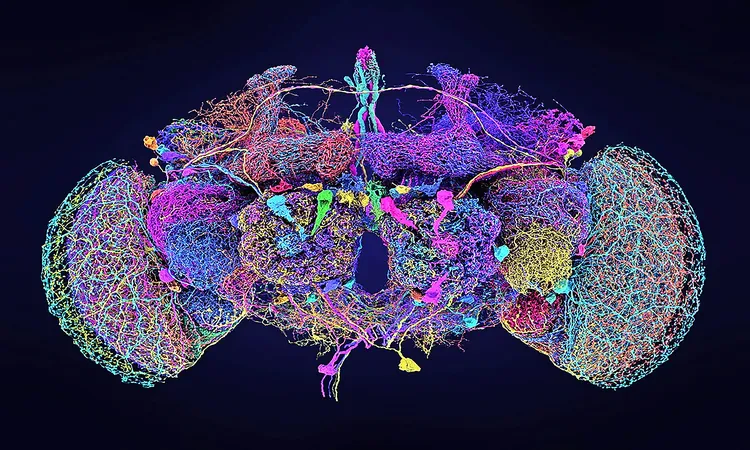
Groundbreaking Discovery: The First Complete Neuronal Map of a Fly's Brain Unveiled
2024-10-12
Author: Kai
Groundbreaking Discovery: The First Complete Neuronal Map of a Fly's Brain Unveiled
Imagine exploring a bustling city, each street and building detailed and interconnected; now, envision this city as an entire brain. This intriguing concept has transformed from imagination to reality, as scientists have successfully created the first complete wiring diagram — known as a “connectome” — of every neuron in an adult fruit fly brain, including an astounding 50 million connections among them. This marks a significant milestone in neuroscience, unlocking new avenues to understand more complex brains, including our own.
A Collaborative Triumph
This ambitious project was made feasible by the FlyWire Consortium, a robust international collaboration involving esteemed institutions such as the MRC Laboratory of Molecular Biology in Cambridge, Princeton University, and the University of Vermont. Published in *Nature*, the research details an intricate wiring diagram that captures the 139,255 neurons of an adult fruit fly, a considerable step up from earlier studies that mapped simpler brains, like those of fruit fly larvae or nematode worms.
Why Study the Fruit Fly?
With merely 140,000 neurons, fruit flies represent a manageable model compared to the 86 billion neurons found in the human brain. Their simpler neuroanatomy allows scientists to probe fundamental aspects of brain function, manipulating genetics to observe how these changes influence neural circuits and behaviors. Surprisingly, the genes and mechanisms governing neural development and information processing in fruit flies share significant similarities with those in humans. Thus, insights gained from these tiny brains can provide vital clues to the complexities of human cognition and behavior.
Revolutionizing Our Understanding of Neural Connections
The detailed mapping not only reveals the physical connections between neurons but also identifies similarities in wiring patterns, challenging the long-held belief that each brain is uniquely structured. The project involved slicing a fly brain—no larger than a millimeter—into 7,000 ultra-thin pieces, meticulously analyzing each through advanced electron microscopy to reconstruct the network of neurons and their connections.
Machine learning played a critical role in managing and analyzing the voluminous data generated, illustrating the potential of artificial intelligence to transform neuroscience. An incredible 33 person-years of labor went into validating data accuracy, showcasing the dedication behind this monumental work.
Simulating Neural Processes
Furthermore, researchers have leveraged AI technology not simply to map the neuronal landscape but to predict synaptic functions, enabling digital simulations of brain activity. Dr. Gregory Jefferis, a co-author of the study, highlighted that sharing this dataset has already allowed other scientists to begin simulating how fly brains might react to their environment.
Future Directions
As groundbreaking as this research is, the journey is just beginning. Future investigations will delve deeper into neuronal differences between male and female fly brains and may direct us toward understanding neurological diseases and developmental disorders. The robust wiring diagram provides a foundation for countless studies that were previously unattainable.
With discoveries like these paving the way for innovative research tools and methodologies, the FlyWire Consortium’s accomplishments exemplify the potential for scientific collaboration in unlocking the last frontier of brain function and connectivity. The findings from this study are poised to be instrumental in unraveling the intricate workings of not only the fly brain but potentially the complexities of human intellect as well.
Are you ready to delve into the mysteries of the brain? Stay tuned for more astonishing revelations in neuroscience!




 Brasil (PT)
Brasil (PT)
 Canada (EN)
Canada (EN)
 Chile (ES)
Chile (ES)
 España (ES)
España (ES)
 France (FR)
France (FR)
 Hong Kong (EN)
Hong Kong (EN)
 Italia (IT)
Italia (IT)
 日本 (JA)
日本 (JA)
 Magyarország (HU)
Magyarország (HU)
 Norge (NO)
Norge (NO)
 Polska (PL)
Polska (PL)
 Schweiz (DE)
Schweiz (DE)
 Singapore (EN)
Singapore (EN)
 Sverige (SV)
Sverige (SV)
 Suomi (FI)
Suomi (FI)
 Türkiye (TR)
Türkiye (TR)